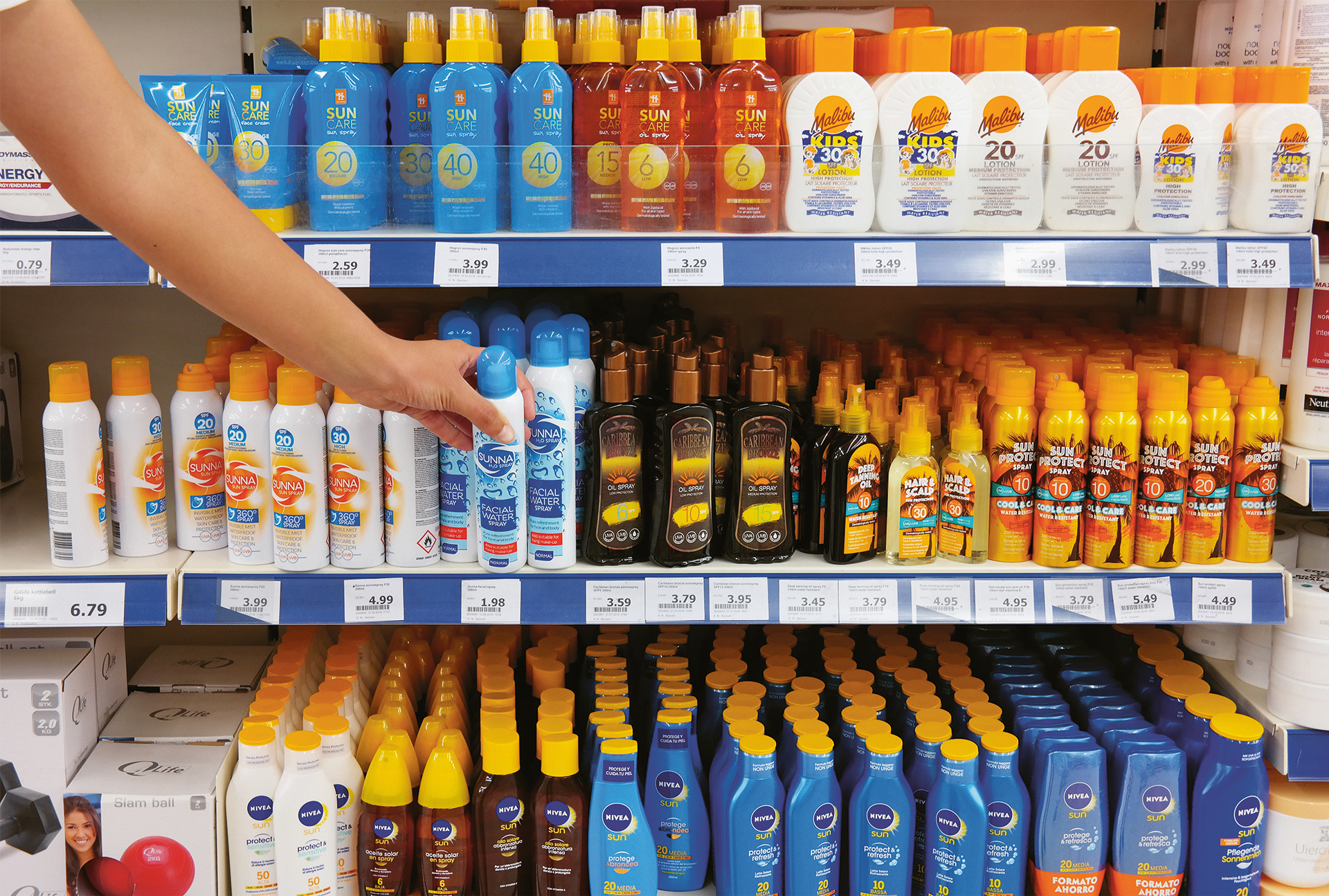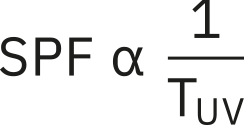
Testing sunscreens to save your skin
More sensitive analysis using Shimadzu UV-2600i, integrating sphere and LabSolutions UV-Vis
It’s finally summertime: The sun is blazing from a blue sky and the beach is calling. But first it is time to hit the drug store and get some sunscreen! The most important criterium: The sun protection factor, which is advertised in big letters on every product. Since sunscreen protects against ultraviolet and visible light, UV-Vis spectroscopy is the ideal tool to test this protection. And the analysis is even easier with the LabSolutions UV-Vis Automated Control function.
Sunscreen products protect our skin against damage caused by ultraviolet and intense visible radiation: everything from annoying sunburn to dangerous skin cancer. But choosing the right one can be difficult. There are just so many different types of cream, lotion and spray, all colorfully calling out to us and promising protection from the sun.
The most important criterium when choosing a sunscreen is the sun protection factor (SPF) – often 30 or 50. Multiply this number by the safe unprotected exposure time for your skin type and you know how much exposure time is safe for you after correctly applying the sunscreen.
|
Type |
Skin color |
Tanning |
Sunburn |
Skin cancer |
Self-protection [min] |
|
I |
Very light |
Freckles only |
Frequent |
High risk |
3 − 10 |
|
II |
Light |
Minimal, slow |
Frequent |
High risk |
10 − 20 |
|
III |
Medium |
Slow |
Sometimes |
Risk present |
20 − 30 |
|
IV |
Brownish |
Fast |
Rarely |
Low risk |
> 45 |
|
V |
Dark |
Fast |
Very rarely |
Low risk |
> 60 |
|
VI |
Dark to black |
Not relevant |
Never |
Low risk |
> 90 |
All of these products are skin-compatible emulsions containing at least one screening agent. This agent accumulates in the corneal layer of the skin and protects it against damage from sunlight – either until the screening agent is destroyed by the absorbed radiation or washed out. Sunscreens can be roughly grouped into oil-in-water emulsions (“sun milk”) and water-in-oil emulsions (“sun lotion”). The highly fluid sun milk is easier to apply, but the fatty sun lotion is more stable against washing out by being in the water. Besides the classic paste, there are also spays and other forms of application available.
Measurement in vitro
The sun protection factor and other parameters are tested on volunteer test persons in vivo or on living cells outside of the body in vitro.[1] There are two main reasons to use in vitro techniques. The testable parameters of in vivo studies are limited, since too long exposure or exposure at very high light intensities can harm the test person. The other reason is that a defined or even automated sample preparation is required for reproducible results.
The in vitro test procedures for the sun protection factor were first defined by the industry interest group Cosmetics Europe (then known as COLIPA) in the 1990s and were issued as open access guideline until 2011, since no harmonized standard was available at that time.[2] Based on this guideline, ISO standard 24443 was developed and finally revised in 2021.[3] As in the original COLIPA guideline, the sample is applied on a roughened PMMA plate and rubbed into this well-defined surface to simulate massaging sunscreen into human skin.
The samples prepared by this procedure are measured with an integrating sphere, to collect all light scattered on the rough surface. The inner surface of this hollow sphere is coated with highly reflective material. All light transmitted and scattered through the sample is reflected on the inner sphere walls until it hits the detector. The sun protection factor (SPF) is calculated from this spectrum with equation 1 – ideally automated by the instrument software:
In this equation, λ is the wavelength in nanometers, E(λ) is the sensitivity of human skin to light of this wavelength and S(λ) is the light intensity of a specified light source or the UV-part of standardized sunlight. Both curves are shown in figure 3. T(λ) is the transmittance of the sample, normalized from 0 to 1. Only specific SPF values are technically available and sunscreen products are grouped into four protection classes as shown in table 2.
Roughly speaking, the integral under the spectrum is calculated and normalized with the integral under the curve E(λ)*S(λ) to simulate the interaction between “real” sunlight and human skin. Equation 1 can therefore be also expressed in a simplified form:
In this simplified equation it is clear that the sun protection factor has no unit and is larger when the transmission in the ultraviolet range is smaller. At 100% transmittance, the SPF is 1 and therefore the total protection time is the same as that of unprotected skin.
|
SPF |
Protection Class |
|
6, 10 |
Low Protection |
|
15, 20, 25 |
Medium Protection |
|
30, 50 |
High Protection |
|
50+ |
Very High Protection |
The wavelength range from 315 to 380 (UV-A) is especially relevant for skin reddening (Fig. 3). At wavelengths above 380 nm, the product from the erythemal action spectrum E(λ) (Erythema = reddened skin) and standard sunlight S(λ) is near zero. That is the reason for the limits of the integrals in equation 1 and the distinction between the UVA (315–380 nm) and UVB (280–315 nm) ranges. Many products are tested and certified explicitly to offer UVA and UVB protection.
The scientific community has also agreed on other parameters based on the SPF from the COLIPA guideline. The erythemal action spectrum can be substituted for a curve describing the individual sensitivity of a patient or skin type, e.g., to test a product specifically for people with sun poisoning. In this case, the factor obtained is called photosensitivity protection factor (PPF).[5] Standard sunlight curve S can also be replaced by a curve more relevant for conditions of the target market, e.g., summer sun in Australia or a sun bed.
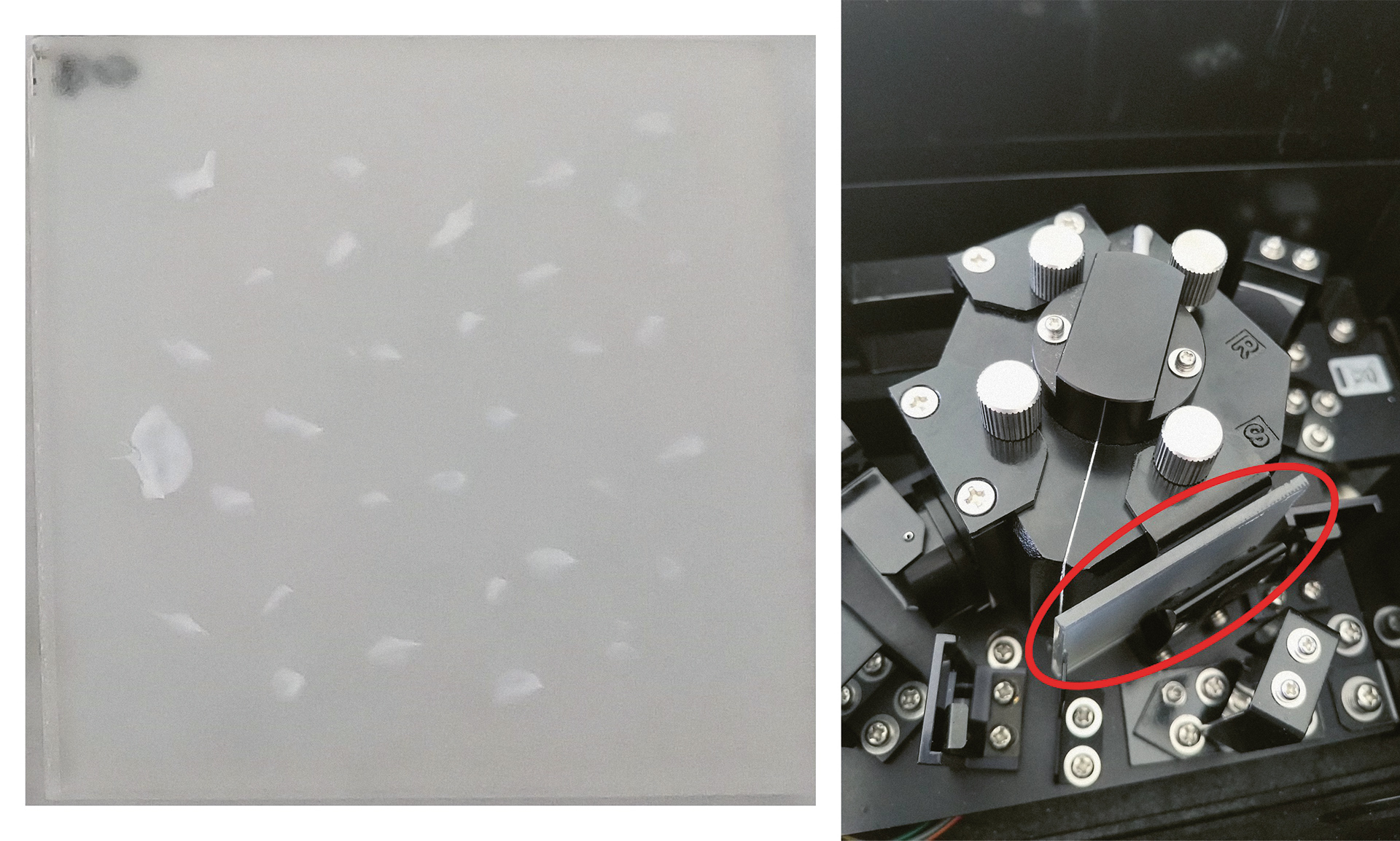
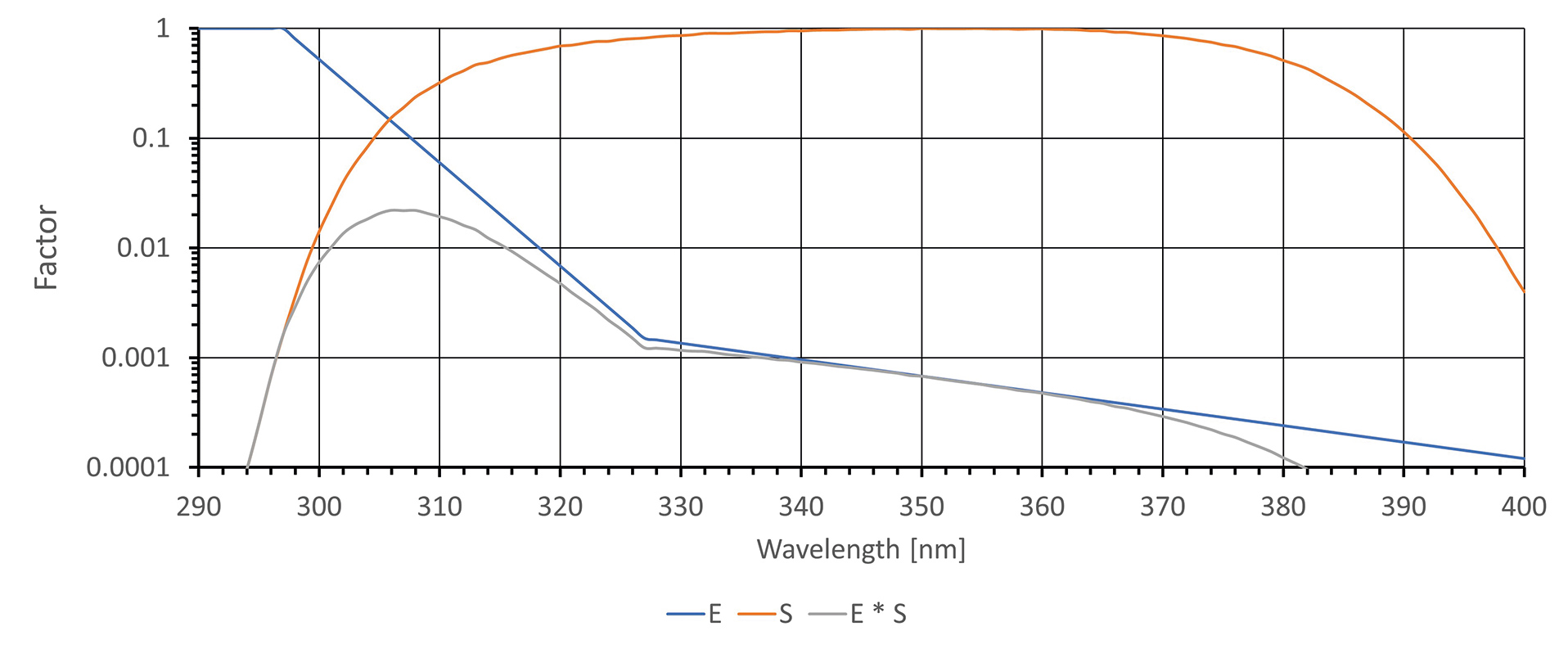
Macro-automated Analysis
These calculations are implemented into a macro for the LabSolutions UV-Vis control software, which automates the workflow from measurement to reporting (Fig. 4).
In this macro, custom curves can be loaded for factors E and S. The ISO 24443 standard curves and CIE standard illuminants [6] (Fig. 3) are already implemented. The sample names and file names of each curve are tracked to trace the final report back to the correct raw data set. The absorbance values are automatically averaged after each measurement.
For example, in one recent analysis, three plates were prepared with a sunscreen with a sun protection factor of 30 and measured at four different positions to compensate for any inconstancy during sample preparation. A Shimadzu UV-2600i spectrometer outfitted with an ISR-2600 integrating sphere was used.
Apart from the protection factor SPF or PPF, the macro calculates the critical wavelength and the specific protection factor for up to three wavelength ranges, which are also relevant during product development. The critical wavelength is the upper limit of the integral, which has 90% of the value of the integral under the whole spectrum:
This means that light with a larger wavelength is nearly irrelevant for the sun protection factor of that sunscreen. A high sun protection factor at a critical wavelength of more than 380 nm creates a false sense of protection, since it doesn’t offer this high protection in the UV range. A product with a critical wavelength of 315 nm has a high protection against UVB light, but less protection against UVA light.
In addition to SPF and PPF, three other protection factors are relevant. These are defined for the wavelength range from 290 to 400 nm and the critical wavelength:
Blue light at 380 – 500 nm
Visible light at 380 – 700 nm
High-energy visibly (HEV) light at 400–500 nm
Protection against blue light is especially relevant for people with photodermatitis (“sun poisoning”), since light in this wavelength range can induce photochemical reactions which cause the symptoms. HEV light as a sub-range of the blue light range can accelerate skin ageing or cause irregular pigmentation.[7]
The visible wavelength range at wavelengths longer than the HEV range is usually not part of the focus of sunscreen development and testing. But depending on the specific allergen, symptoms of photodermatitis can be caused by light in the entire visible spectrum.
Since factors E(λ) and S(λ) are near zero at wavelengths longer than 400 nm and these protection factors are expressed in percent, a different formula is used. The blue, visible and HEV protection factor is calculated from transmittance averaged over each wavelength range:
T is the transmittance through the sample from 0 to 100 % at each wavelength λ, and n is the total number of data points in the spectrum. 0 % transmittance therefore means 100 % protection and vice versa. The limits of each sum are the specific wavelength range as described above.
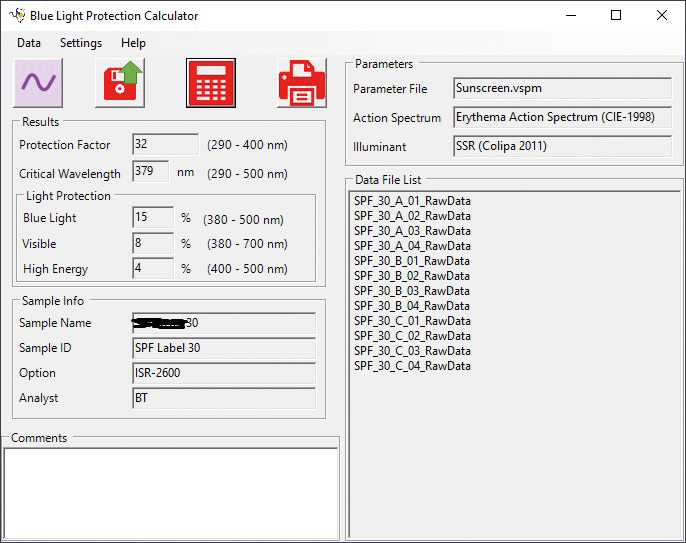
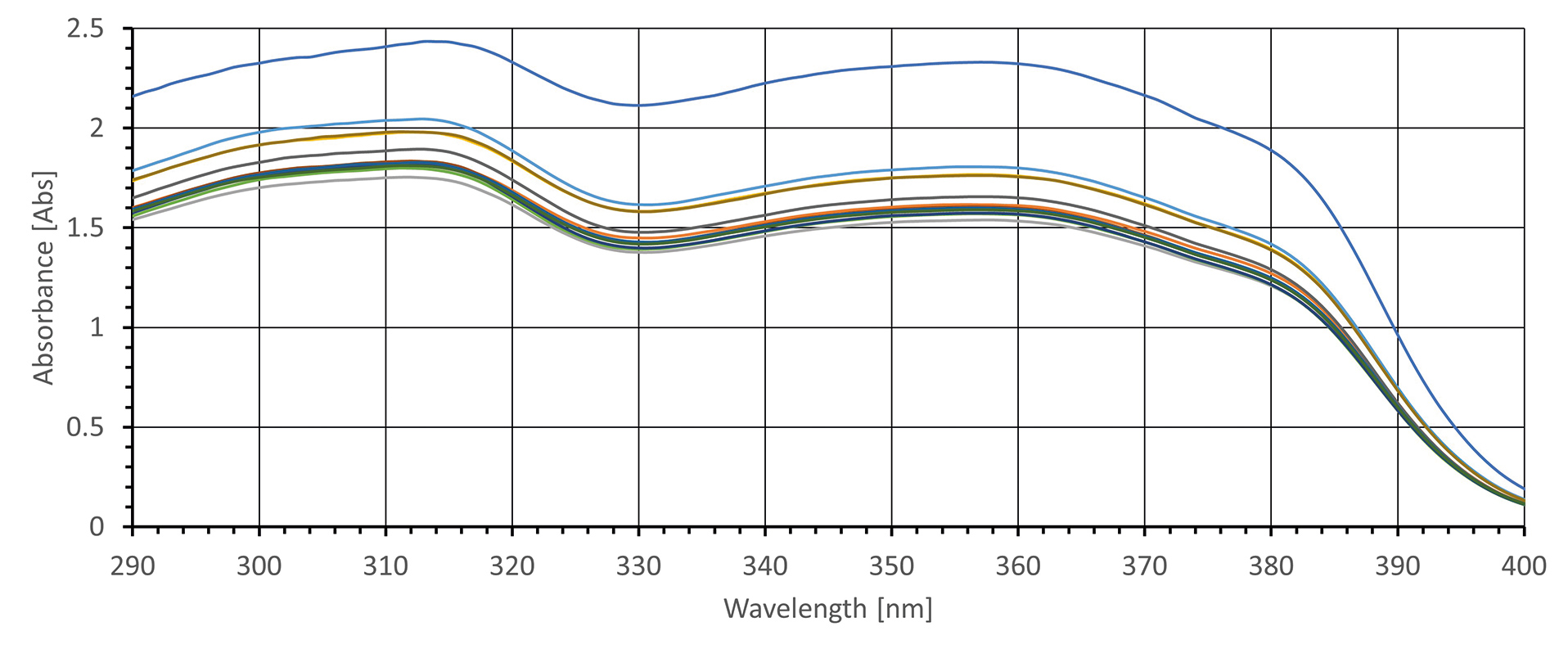
Other applications
The focus of all these parameters is protection against light in or close to the ultraviolet range, as these can cause erythema, sunburn or – in the worst case – skin cancer. But this analysis can also be applied to infrared light of up to 2500 nm. Infrared light – also known as heat radiation – is usually perceived positively and technically used as a beneficial heat source. But excessive exposure to high intensity infrared light can accelerate skin ageing, which is why sunscreens should also offer some protection against light in the near infrared wavelength range.[8]
The macro was therefore designed to let the user adjust the wavelength ranges depending on the specific application. With a Shimadzu UV-3600i Plus and the integrating sphere ISR-603, measurement is possible in the wavelength range from 220 to 2500 nm. Additionally, the UV protection factor of fabric can be calculated with the LabSolutions UV-Vis UPF software. Using this combination of technology, the entire range of sun protection topics can be examined, and reveal much more information than does the sun protection factor printed on the sunscreen packaging.
References
- A. P. Schuch, M. M. C. S, T. Yagura, and C. F. M. Menck, “Highly Sensitive Biological Assay for Determining the Photoprotective Efficacy of Sunscreen,” Environ. Sci. Technol., vol. 48, no. 19, pp. 11584–11590, 2014. https://doi.org/10.1021/es503721a
- C. Guidelines, “In vitro method for the determination of the UVA protection factor and ‘critical wave-length’ values of sunscreen products,” 2011.
- M. Pissavini et al., “Validation of an in vitro sun protection factor (SPF) method in blinded ring-testing,” International Journal of Cosmetic Science, vol. 40, no. 3, pp. 263–268, 2018. https://doi.org/10.1111/ics.12459
- A. R. Webb, H. Slaper, P. Koepke, and A. W. Schmalwieser, “Know Your Standard: Clarifying the CIE Erythema Action Spectrum,” Photochem. Photobiol., vol. 87, no. 2, pp. 483–486, 2011. https://doi.org/10.1111/j.1751-1097.2010.00871.x
- H. Moseley, H. Cameron, T. MacLeod, C. Clark, R. Dawe, and J. Ferguson, “New sunscreens confer improved protection for photosensitive patients in the blue light region,” Br. J. Dermatol., vol. 145, no. 5, pp. 789–794, 2001. https://doi.org/10.1046/j.1365-2133.2001.04429.x
- E. C. Carter et al., “CIE Technical Report: Colorimetry, 4th Edition,” 2001.
- L. F. et al., “Irradiation of skin with visible light induces reactive oxygen species and matrix-degrading enzymes,” Journal of Investigative Dermatology, vol. 132, no. 7, pp. 1901–1907, 2012. https://doi.org/10.1038/jid.2011.476
- E. Delamour, S. Miksa, and D. Lutz, “Are Your Sunscreens Infra-ready? New In vitro Method Puts Data Behind the Claims” 2017. https://www.cosmeticsandtoiletries.com/testing/method-process/article/21836863/are-your-sunscreens-infra-ready-new-in-vitro-method-puts-data-behind-the-claims (accessed 09.05.2022)
